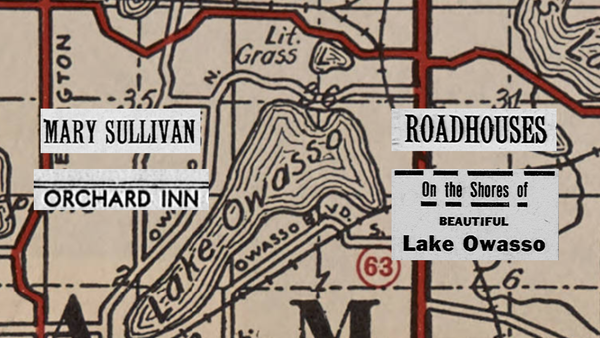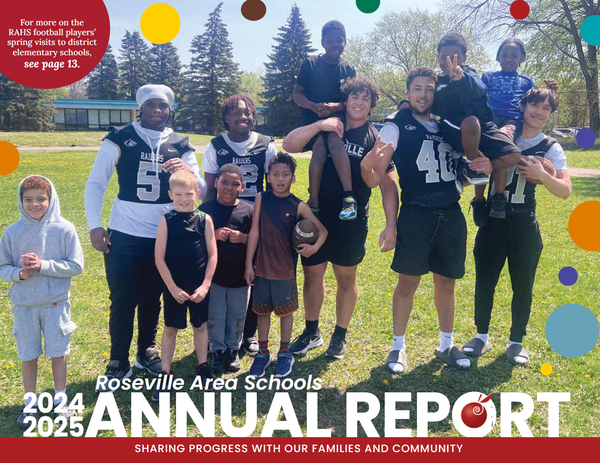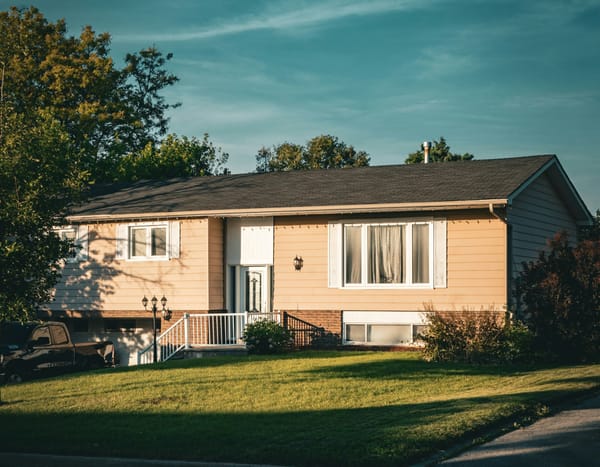Fire department asks community for support
The Roseville Fire Department is overwhelmed and understaffed
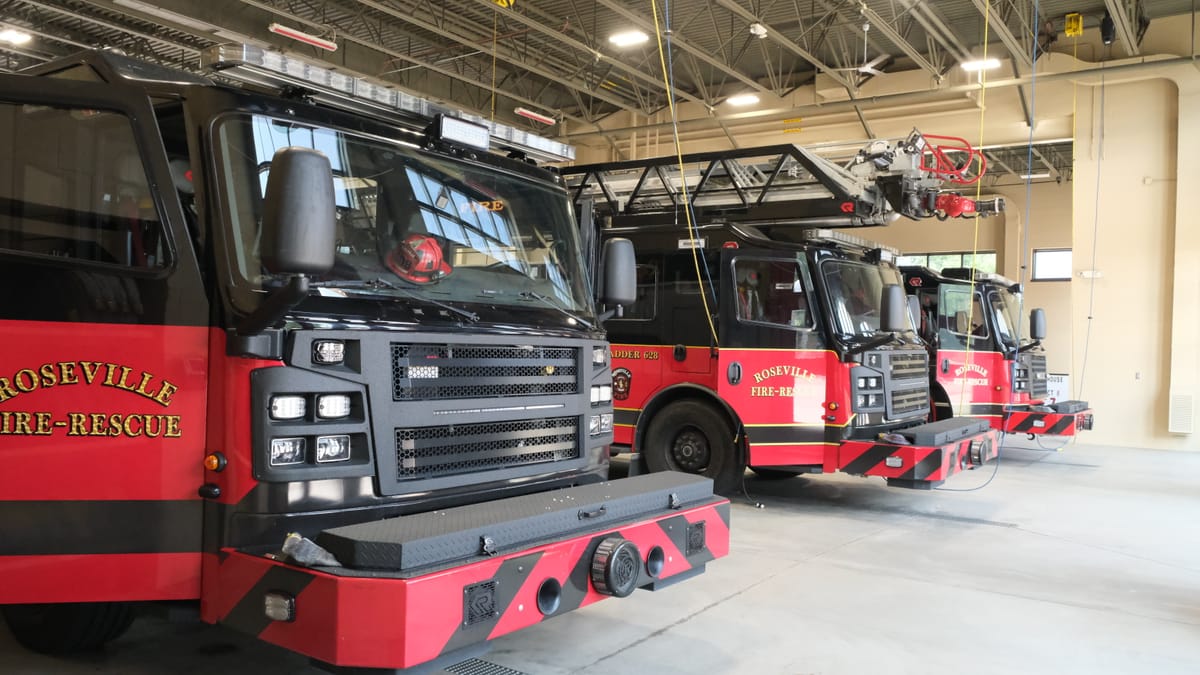
The Roseville Fire Department is here to serve Roseville, whether they're putting out fires, responding to medical emergencies, or connecting with the community at events. Now, they are turning to the community to ask for an additional investment to keep these services sustainable.
“We're here 24/7, 365. Holidays. Sunny weather, snowy weather. It doesn't matter whether it's a weird smell in your basement or your foot is swollen and you're worried about it. Just call us. We'll come out. We might not come with red lights and sirens, but we'll come out and we'll check it out and see what we can do for you,” Fire Chief David Brosnahan told the Roseville Reader.
People often ask him if there are things they shouldn’t call 911 for. His response? If you think it’s an emergency, call 911 and they will respond.
“I've always felt that we are the stewards of the community, and I think it's important that no matter what the issue is, we should be there,” Brosnahan said. He's a Roseville resident too and has been with the fire department for almost 25 years now.
The Roseville Fire Department (RFD) is not just on call to fight fires. In fact, in 2024 just 1.73% of incidents were fire related. The vast majority of calls for service were for rescue and emergency medical incidents--68.98% of the total call volume last year, which came out to 5,190 individual incidents.

RFD paramedics and EMTS are the first to respond to medical emergencies when someone calls 911 in Roseville. They’ll administer emergency medical care and stay with the patient until the ambulance arrives or the emergency is resolved.
The fire department also tries to be available for community events, block parties, or birthday parties, when possible. Speaking of which, the last of the summer's Fridays with Firefighters is today, August 8 from 10 to noon. This is a family-friendly event is an opportunity for anyone in the community to interact with firefighters, ask questions, and learn about the fire department.
Overwhelmed and Understaffed
It has become harder and harder to deliver the kind of emergency service Roseville residents expect and the fire department is overwhelmed and understaffed. It's also becoming more challenging to participate as frequently in community engagement activities residents enjoy, due to an increase in calls for emergency service.
People in Roseville relied on the fire department 7,544 times in 2024. The current staffing model—24 full time firefighters—is overcapacity, resulting in slower response times and even the inability to adequately respond to some calls. In 2024, there were 235 instances of emergency calls when the fire department’s resources were unavailable or provided an inappropriate or modified response.
Nearly 60 percent of the call volume is multiple, overlapping calls, Brosnahan said. This means crews are often forced to go from call to call without coming back to the station first or two crews are out at once and then a third call comes in and they have to figure out how to respond.
“We have no margin for error. And so we're in a situation where we're out on two, three, four different emergencies all at the same time. And I'm really worried about when that third or fourth emergency happens. Do we have the staffing to handle it?” Brosnahan said.
During this interview, a crew was already out responding to a medical call when another call for a medical response came in. Ten minutes later, a third call for another medical response came in. All in the span of thirty minutes.
There have been specific situations when they are out at two or three EMS emergencies and a house fire call comes in. But because they can’t leave a patient before the ambulance arrives, they have sometimes been delayed to a house fire. It is not out of the ordinary to wait for an ambulance for 15-25 minutes, which Brosnahan says is an unacceptable wait time.
Brosnahan's concern about ambulance response times has been communicated to Allina, but little has been done to improve service. The City of Roseville has no oversight of or ability to change ambulance providers, due to a state law and a decision in 1979 to assign Roseville exclusively to Allied Health—now Allina—as part of their "Primary Service Area." Without changes to state law, Roseville has no choice but to rely on Allina's ambulance services.
"Their inability to provide their highest level of service is impacting our ability as well, because it stretches us even more thin," Brosnahan said.
Since 2018, emergency call volume to the Roseville Fire Department has increased by 50 percent, but staffing has not kept up with that pace.
“I'm just at a point where I'm no longer comfortable with our current staffing status with the volume that we have. And I think that we're leaving the city open to potential risk, because of how stretched thin we are” Brosnahan said.
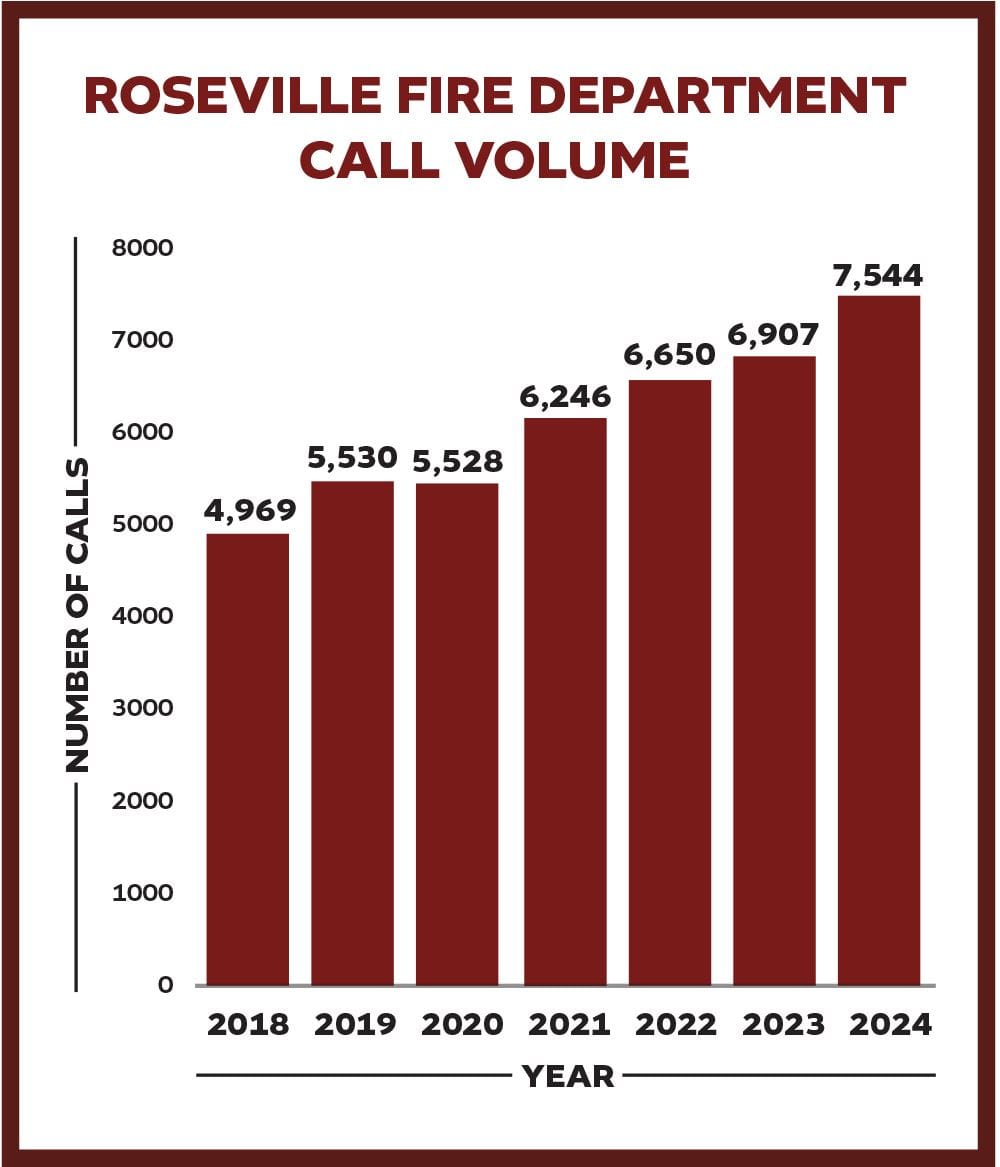
Roseville shifted from a volunteer and paid-on-call organization to a professional full-time staff in 2015. At that time, there were nine full time, paid-on-call firefighters and they responded to approximately 4,400 calls that year. In 2018, the department grew to 18 fulltime firefighters, then added six more in 2020. That number is no longer enough to respond to the needs of the community.
Firefighter Well Being
The call volume is so high that it is very difficult to do on-the-job training. They used to do a lot of training on shift, which was a cost-savings to the city. Now, firefighters come in on overtime to get their training, which is more expensive and not as cohesive or team building as it used to be.
Fatigue and burnout is a concern for firefighters who work nonstop during their shifts. When they get home, they have nothing left to give.
“I mean, you're tired, you're beat up. All you want to do is nap, and then your kids want to go run to the park or do something, and you don't have the energy and the ability to do it,” Brosnahan said.
The fire department has taken steps for caring for their staff’s mental health—such as the therapy dog Ashes and a mental health specialist who was brought in five years ago as an external contractor. He’s there to help the firefighters navigate all kinds of stressors on and off the job, including things in their personal lives.

Why have emergency calls increased?
“There are needs in the community that are expanded beyond what our capacity is. What we're seeing with our increase in call volume over the last five years consistently, is just the needs of the community are increasing,” Brosnahan said.
Roseville’s population is right around 36,000 people, but over 30,000 people come into the city every day to work and more come in to the city to shop, dine, and enjoy recreational activities. A lot of the call volume is people coming into the city, Brosnahan said. Roseville is a popular place to visit.
It’s also caused by an increase in population density due to new multi-unit housing developments and an increase in senior housing. Seniors in particular end up calling 911 for emergency medical services more frequently than other demographics, Brosnahan said.
According to a study conducted by Stantec for the city of Roseville this spring, around 15 percent of Roseville’s total housing stock is catered to seniors. Almost two dozen senior housing developments are located in Roseville. This includes rent restricted and rent subsidized apartments, market rate apartments, housing co-ops, and assisted living and nursing care facilities. Since 2017, seven new senior housing developments were built in Roseville, totaling 1,007 individual units.
Overall, Roseville's population is older on average than that of comparison cities. Twenty-two percent of Roseville residents are 65 and older. For comparison's sake, 16% of New Brighton's residents are seniors and in both Saint Louis Park and Richfield, 18% are seniors.
According to the same study, over a third of Roseville housing units are in multifamily buildings, which is higher than the average for the metropolitan area. Six market rate apartment developments have been built since 2018.
People also call 911 more frequently when they are uninsured or underinsured, Brosnahan said. He is anticipating more frequent calls in the future due to changes in Medicaid funding at the federal level. This will increase barriers to medical care, which leads to more reliance on emergency services.
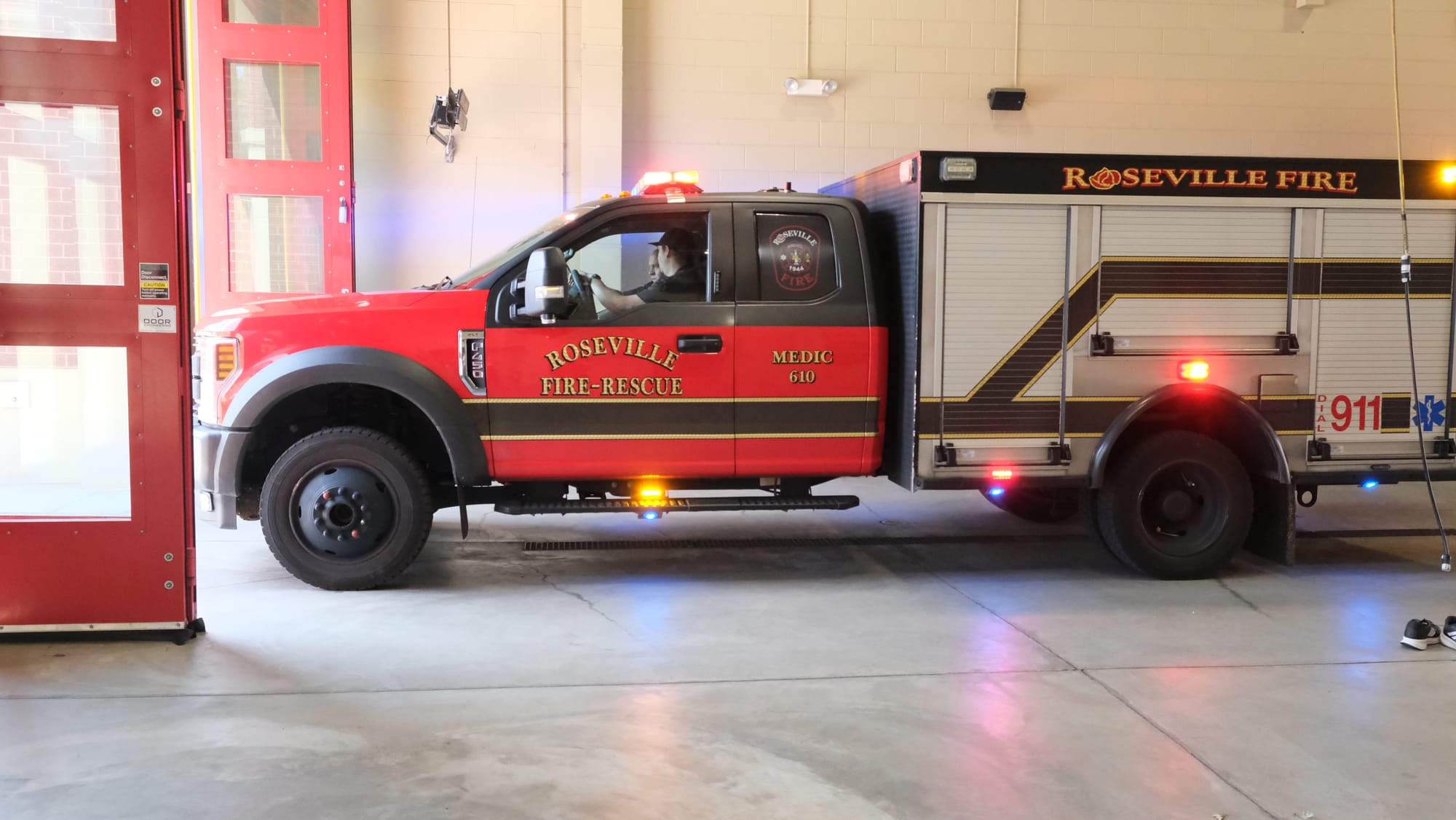
Solving the Staffing Problem
The Roseville Fire Department is asking the city council to increase their budget so they can hire fifteen new personnel next year. That would bring the total number of fulltime firefighters up to 39. The goal is to have 3 shifts of a maximum of 13 people on each shift, rotating to cover 24 hours.
This would allow the fire department to staff another apparatus, which would give them more flexibility in responding to overlapping calls. The RFD has enough vehicles (and an electric fire engine on the way this fall), but not enough people to make use of them during overlapping calls. This staffing model would allow up to three people to be off duty too, for sick time, vacation, or to recover from injuries. The increase in staffing will also allow proper, on-shift training to be conducted.
“This could be a big ask. We're going to be asking for between six and seven hundred thousand dollars in year one, and potentially an additional one, to one and a half million dollars the year after that,” Brosnahan said.
When asked if bringing back volunteer firefighters or part-time firefighters into the equation could help alleviate the burden, Brosnahan said it would not. He started as a volunteer firefighter and believes it's an admirable and honorable role, but that model is no longer appropriate for a city the size of Roseville. There's a lot more turnover with a volunteer model, increased costs associated with training, gear, and equipment, and less consistent service and professionalism, he said.
City budget planning
The fire department is not a revenue-generating program. It’s 100% publicly funded through the city tax levy and occasional grants.
The Roseville Fire Department received a FEMA Staffing for Adequate Fire and Emergency Response (SAFER) grant in 2020, which helped pay for six new personnel. They’ve applied for the grant again this July, after the delayed application window finally opened. They'll find out in October whether or not this grant will be awarded, but the budget process for next year will be nearly finalized by then.
There are no other regular grant opportunities from the state or county level for fire departments, so the rest will fall to the city's tax levy.
The Fire Department's analysis of the city budget estimates a 2.2% levy increase, which would be less than 1% of the total city budget. Based on a median home value of $360,500, this would be an estimated $33.05 increase in property taxes per home in 2026, and an increase of $70 in 2027.
“We want to try to make sure that we're providing the best level of care possible because our community deserves it. But with that improved level of care comes increased costs, and we're just looking for their support to help us with that,” Brosnahan said.
The city council will be reviewing City Manager Pat Trudgeon's 2026 budget proposal for the first time on August 26. That's the next time funding for the police and fire departments will be discussed at a city council meeting. Trudgeon will also be presenting the budget to the finance commission on August 27. The police department is also asking for an increase in their budget to hire more personnel.
The city council will set the preliminary levy on September 22 and the plan is to have the final budget and levy approved on December 1.
Learn more:
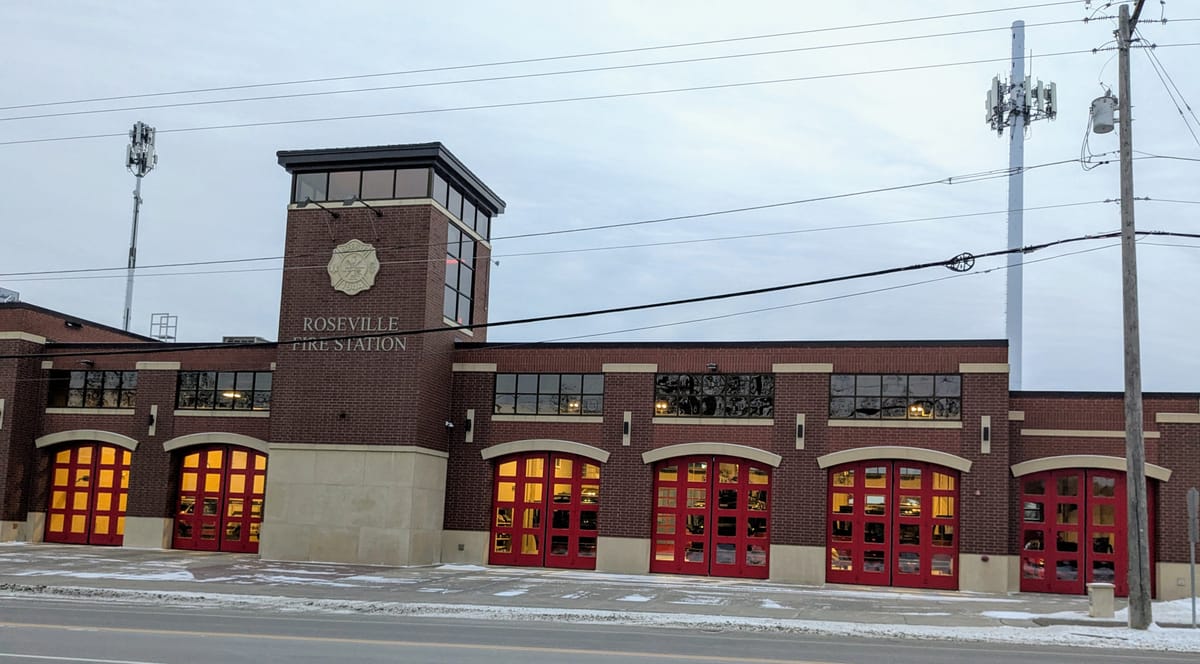

View the Fire Department's January city council presentation on the proposed new staffing model here.




